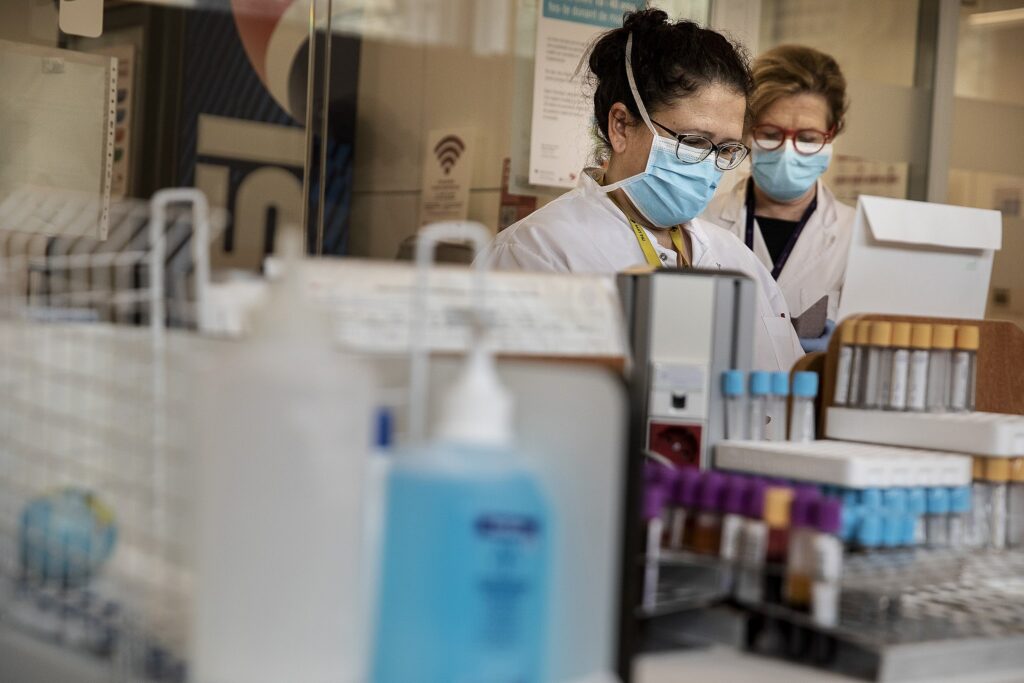The impact of the pandemic on health services and on mortality is expected to continue on a downward trend and Ómicron's BA.2 lineage is already responsible for more than half of infections, according to the "red lines" released yesterday.
“Given the reduction in incidence that has been observed, the downward trend in the impact on health services and mortality should continue”, says the weekly risk analysis of the Directorate-General for Health (DGS) and the National Institute. of Health Doctor Ricardo Jorge (INSA).
According to the document, the BA.1 lineage of the Ómicron variant has registered a downward trend, now representing 49,2% of infections, and, in countercycle, BA.2, which experts admit is more transmissible, “is becoming if dominant”, with INSA estimating a prevalence of 50,8% on Thursday.
The number of patients in intensive care units is falling, which on Wednesday corresponded to 42% of the threshold defined as critical of 255 occupied beds, compared to 52% in the previous week.
With regard to specific mortality by Covid-19, the “red lines” indicate that it registers a value of 52 deaths in 14 days per one million inhabitants, lower than the 59,7 in the last report, which reveals a “downward trend” of the pandemic in this indicator.
Despite this, this value is above the threshold of 20 deaths in 14 days per million inhabitants defined by the European Center for Disease Control (ECDC) and above the threshold of 50 deaths per million inhabitants, which still translates into a very high impact of the epidemic on mortality.
The document also adds that there is a decreasing trend in the incidence of new infections cumulative to 14 days in all age groups, with the highest in the age group between 10 and 19 years (3.517 cases.)
The proportion of cases with positive results in tests carried out in the last seven days was 12,3% (14,5% in the last report), a value that is above the 4% threshold, but also with a decreasing trend.
In the last week, about 671 coronavirus screening tests were carried out, while in the previous seven days more than 847 had been carried out.
The DGS and INSA reiterate that people with the complete vaccination schedule had a two to seven times lower risk of hospitalization than unvaccinated citizens, among the total number of infected people in December.
“Citizens with a complete vaccination schedule had a risk of death two to six times lower than those who were not vaccinated, among the total infected in January. In the population aged 80 years and over, the booster dose reduced the risk of death from covid-19 by almost four times compared to those who have the complete primary vaccination schedule ”, also underlines the risk analysis of the pandemic.
Despite the improvement in indicators, the “red lines” recommend that surveillance of the epidemiological situation must be maintained and recommend the maintenance of individual protection measures and booster vaccination.
Covid-19 has caused at least 5,9 million deaths worldwide since the beginning of the pandemic, according to the latest report by the Agence France-Presse.
In Portugal, since March 2020, 20.973 people have died and 3.241.451 cases of infection have been recorded, according to the latest update from the Directorate-General for Health.
The respiratory disease is caused by the SARS-CoV-2 coronavirus, detected in late 2019 in Wuhan, a city in central China.
The rapidly spreading and mutating Ómicron variant has become dominant in the world since it was first detected in November in South Africa.



















Comments